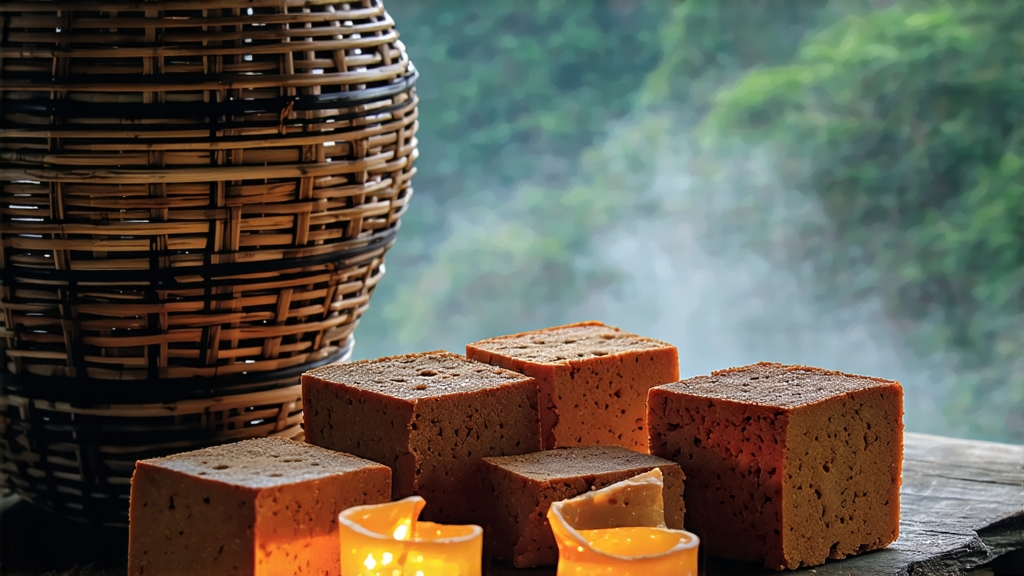
Tucked away in the subtropical hills of Guangxi Province, Liupao (sometimes spelled “Liu Bao”) is the quiet genius of China’s dark-tea lineage. While Pu-erh grabs headlines, Liupao has spent four centuries refining a flavor that smells like walking through a pine forest after rain and tastes like dark honey poured over old leather. To understand it is to witness how geography, trade routes, and microbial artistry can conspire in a single leaf.
History: From Border Tribute to Maritime Currency
Liupao’s documented story begins in the late Ming dynasty, when tea growers around Wuzhou city presented compressed tea as tribute to the imperial court in Guangzhou. The court, however, found the leaf too coarse for the gentry and redirected it to the military garrisons on the southern frontier. There, soldiers discovered that the tea settled stomachs soured by river water and repelled the damp fever of the subtropics. By the Qing era, Liupao had become a bar commodity along the Pearl River; boatmen accepted bricks and baskets of it as payment, knowing they could sell it further downstream to Malay tin miners and rubber tappers. In 1802 the British East India Company listed “Lew-pak” in its Canton ledgers at half the price of Pu-erh but double the volume, proof that Liupao was the workhorse of the dark-tea trade. When the Malayan railways arrived in 1905, entire train cars of Liupao steamed southward, each basket stamped with the ideogram “茶” in red soot, a promise of thirst-quenching, malaria-fighting comfort.
Micro-Terroir: Why Wuzhou Tastes Like Nowhere Else
The tea itself is almost always the large-leaf Camellia sinensis var. assamica, but the real signature comes from the environment. Wuzhou sits at the confluence of the Xun and Gui Rivers, where warm, wet air from the South China Sea collides with the limestone karst of the Yao Mountains. Average humidity hovers at 82 %, creating a natural “wet piling” incubator long before humans mechanized the process. The rivers deposit mineral-rich silt that tea roots drink slowly, translating into a pronounced petrichor note that cuppers liken to “stone sweat.” Local bamboo (Phyllostachys heteroclada) adds another layer; the hollow stems are harvested, split, and woven into baskets that cradle the tea for decades, imparting a faintly resinous sweetness that no cedar or clay can replicate.
Craft: The Six Acts of Liupao Alchemy
- Plucking: Only the 3rd to 5th leaves are taken, the so-called “yellow strips” that are too leathery for green tea but perfect for microbial grazing.
- Solar Withering: Leaves are spread on hemp cloth for four hours, long enough to lose the grassy edge but short enough to keep enzymatic firepower.
- Wok Kill-Green: A 280 °C toss for ninety seconds deactivates most oxidases yet leaves a stubborn minority that will fuel later fermentation.
- Rolling & Sun-Drying: The leaf is twisted into ropey cords and dried under subtropical sun until 85 % moisture is gone, arriving at “mao cha” that smells like dried apricot.
- Wet-Pile Fermentation: Unique among dark teas, Liupao uses river water sprinkled onto 1,500 kg piles. The water’s pH of 6.9 and its microbial load—dominated by Aspergillus niger, Blastobotrys adeninivorans, and a rare Wallemia sebi—drive a 25-day composting curve. Every three days the pile is turned by barefoot workers who judge readiness by aroma: first mushroom, then prune, finally the signature betel-nut.
- Basket Compression & Cave Aging: The fermented leaf is steamed for 30 seconds, rammed into 40 kg bamboo baskets lined with wild banana leaf, and moved to limestone caves where temperature stays 22 °C year-round. Here the tea breathes through bamboo gaps, slowly oxidizing and desorbing cave minerals for anywhere from three to fifty years.
Grades & Shapes: A Lexicon for the Curious
- San Cha: Loose leaf sold by the kilo, aged 3–5 years, the everyday brew of Guangxi truck stops.
- Gong Cha: Basket-pressed, 7-year minimum, once reserved for Malay sultans; today it